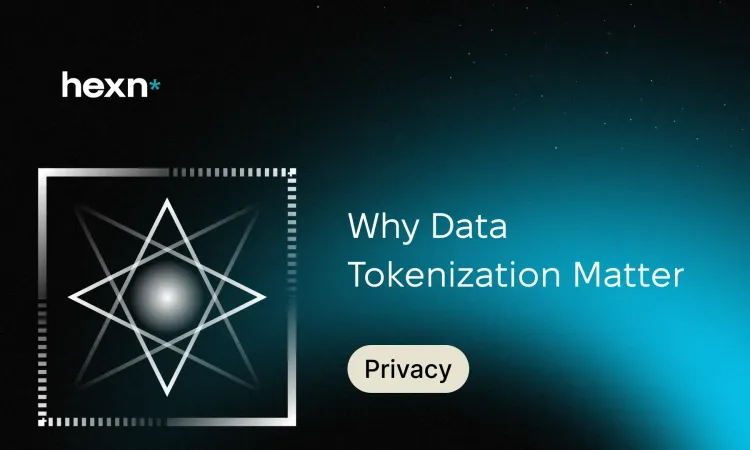What Is Data Tokenization?
Data tokenization converts sensitive information—like credit card numbers or private profile details—into unique, non-sensitive tokens that can be moved, stored, and processed without exposing the original values. This approach matters because it reduces the risk of breaches, supports privacy goals, and can simplify compliance for organizations handling regulated data.
What Are Digital Tokens?
Tokens are digital identifiers recorded on a blockchain that represent value, rights, or data. Unlike native coins that secure a blockchain’s protocol, tokens are issued on top of an existing chain and come in many standards and formats. Some tokens represent digital assets or access rights; others act purely as placeholders for sensitive information that must never be revealed.
Tokenization vs Encryption
Both encryption and tokenization protect data, but they do so differently. Encryption scrambles data using mathematical algorithms and keys; the ciphertext can be restored only with the proper key. Tokenization replaces the original data with an unrelated identifier and keeps the mapping in a secure store. In practice, tokenization removes sensitive data from systems, while encryption keeps an obfuscated version that still represents the original.
How Tokenizing Data Works
In a tokenization flow, sensitive data is sent to a secure token service. That service stores the original value in a protected vault and returns a token—an alphanumeric string or on-chain reference—that systems can use in place of the real data. The token itself has no exploitable relationship to the underlying information, so if it leaks, attackers cannot reconstruct the original value without access to the vault.
Applied to digital identities or social profiles, tokenization can allow a user to carry their data between platforms. For example, a wallet-based identifier can be linked to profile metadata and activity records. When a new service requests access, it receives the tokenized representation and, where permitted, the system can reference the vault to verify claims without exposing raw personal data.
Key Benefits of Data Tokenization
Stronger Protection Against Breaches
Replacing sensitive fields with tokens reduces the amount of valuable data that can be stolen from applications and databases, lowering exposure in the event of a compromise.
Easier Regulatory Alignment
Tokenized values are often treated as non-sensitive by regulators, which can reduce audit scope and simplify compliance efforts for industries such as payments, healthcare, and identity services.
Granular and Secure Data Sharing
Organizations can share tokens rather than raw data with partners, giving recipients the ability to verify or process information without ever holding the underlying sensitive attributes.
Practical Limitations and Risks to Consider
Potential Impact on Data Fidelity
Converting fields into tokens can strip contextual detail. For instance, tokenizing location data may limit the ability to deliver region-specific content or services unless additional safe metadata is preserved.
Interoperability Challenges Across Systems
Different platforms might use incompatible token formats or vaults, making it harder for tokens to be understood or used universally without agreed standards or translation layers.
Governance and Ownership Questions
Tokenization raises policy issues about who controls the vault, who can mint or revoke tokens, and how user consent is recorded and enforced. Clear governance is essential to avoid misuse or disputes over access rights.
Recovery and Operational Resilience
If a token vault becomes unavailable or corrupted, restoring both tokens and their original values can be complex. Robust backup, access controls, and recovery plans are critical.
Use Cases: Social Media, Tokens, and NFTs
Centralized platforms historically lock user data into walled gardens. Tokenization enables a different model: users can represent profile attributes, content access rules, and digital collectibles (like NFTs) as tokens they control. That control lets users monetize or license data intentionally—granting advertisers or researchers access under specified terms—or migrate identities between services without losing ownership of their history and assets.
For creators, token-based gates let them require a minimum token balance for interaction, restrict content to verified holders, or accept micro-payments and subscriptions directly tied to the tokenized identity.
Best practices
- Design clear governance for token issuance, revocation, and vault access.
- Minimize what is tokenized—preserve only what is necessary to balance utility with privacy.
- Use established standards and interoperability layers where possible to avoid vendor lock-in.
- Combine tokenization with other protections (access controls, monitoring, encryption for backups) to create layered defense.
- Plan for disaster recovery and regular audits of token stores and mapping services.
Final Thoughts
Tokenization is already used in payments and healthcare and is gaining traction across identity and digital content systems. When implemented thoughtfully, it can reduce data exposure, support compliant data sharing, and give users more control over their information. Organizations should weigh the technical and governance trade-offs, pilot use cases, and prioritize transparency with users to build trust as this approach scales.
